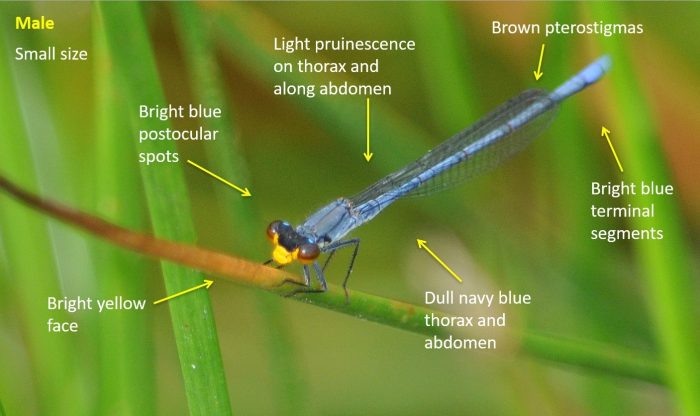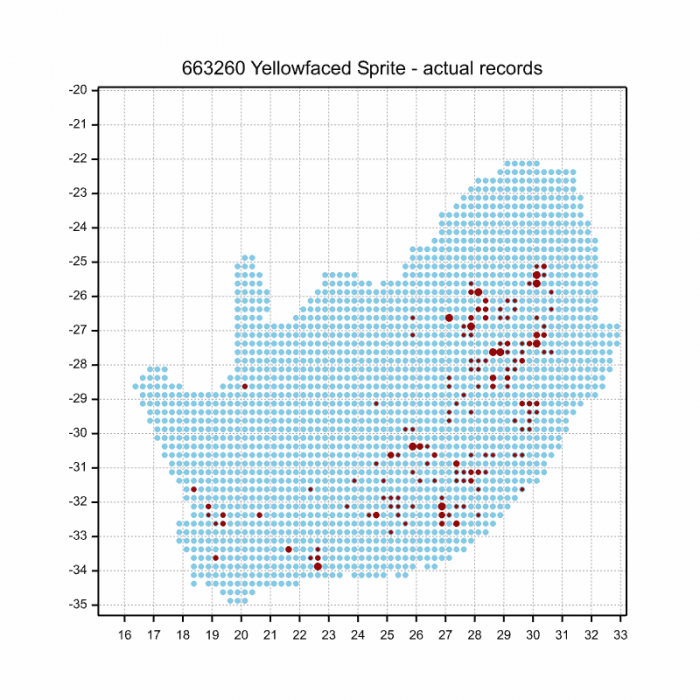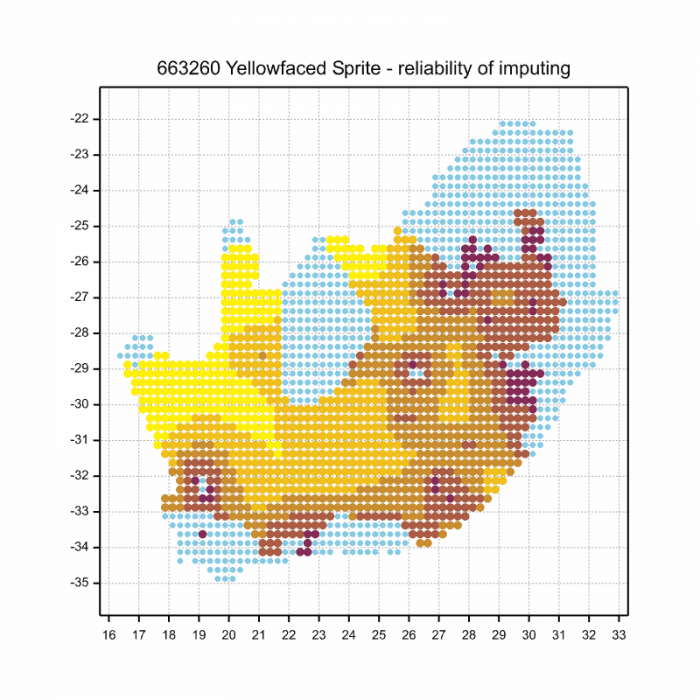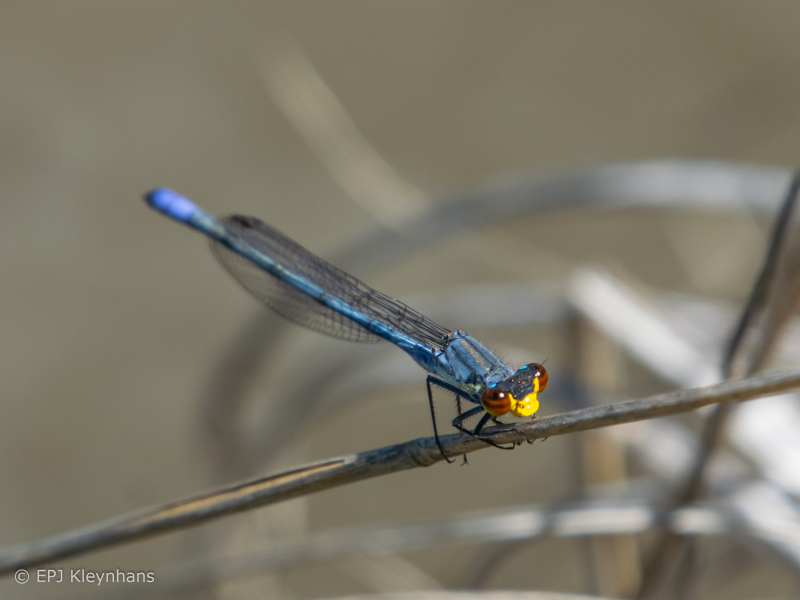View the above photo record (by Evert Kleynhans) in OdonataMAP here.
Find the Yellow-faced Sprite in the FBIS database (Freshwater Biodiversity Information System) here.
Family Coenagrionidae
Pseudagrion citricola – YELLOW-FACED SPRITE
Identification
Small size
Length up to 42mm; Wingspan reaches 50mm.
Pseudagrion citricola is one of three ‘yellow-faced’ sprites in the region. The other two are Pseudagrion caffrum and Pseudagrion gamblesi. The latter is easily distinguished by its significantly larger size and distinctive bright blue terminal segments. Pseudagrion citricola is most similar to Pseudagrion caffrum, but can be differentiated by having postocular spots and brighter blue terminal segments on the abdomen.
Click here for more details on identification.

Near Underberg, KwaZulu-Natal
Photo by Ryan Tippett
Habitat
Favours the grass and sedge margins of perennial streams and rivers. Sometimes makes use of marshes and suitable dams adjoining streams.
Occurs mostly at high altitudes in the north of its range, above 1200m a.s.l. Found at Lower altitudes in the Eastern and Western Cape.

Photo by Ryan Tippett
Behaviour
A fairly conspicuous species that perches openly on grass stems near the water. Flies fast and low over the water.
Most active from September to May (see Phenology below).
Status and Conservation
Common and endemic to South Africa. Listed as of Least Concern in the IUCN Red List of Threatened Species.
Distribution
Pseudagrion citricola is a South African endemic. It is sparsely distributed in the interior mountains of the Western Cape. More widespread and numerous in the Eastern Cape, extending up on to the highveld areas of the Freestate, KwaZulu-Natal, North-west, Gauteng and Mpumalanga.
Below is a map showing the distribution of records for Yellow-faced Sprite in the OdonataMAP database as at February 2020.

The next map below is an imputed map, produced by an interpolation algorithm, which attempts to generate a full distribution map from the partial information in the map above. This map will be improved by the submission of records to the OdonataMAP section of the Virtual Museum.


Ultimately, we will produce a series of maps for all the odonata species in the region. The current algorithm is a new algorithm. The objective is mainly to produce “smoothed” maps that could go into a field guide for odonata. This basic version of the algorithm (as mapped above) does not make use of “explanatory variables” (e.g. altitude, terrain roughness, presence of freshwater — we will be producing maps that take these variables into account soon). Currently, it only makes use of the OdonataMAP records for the species being mapped, as well as all the other records of all other species. The basic maps are “optimistic” and will generally show ranges to be larger than what they probably are.
These maps use the data in the OdonataMAP section of the Virtual Museum, and also the database assembled by the previous JRS funded project, which was led by Professor Michael Samways and Dr KD Dijkstra.
Phenology



